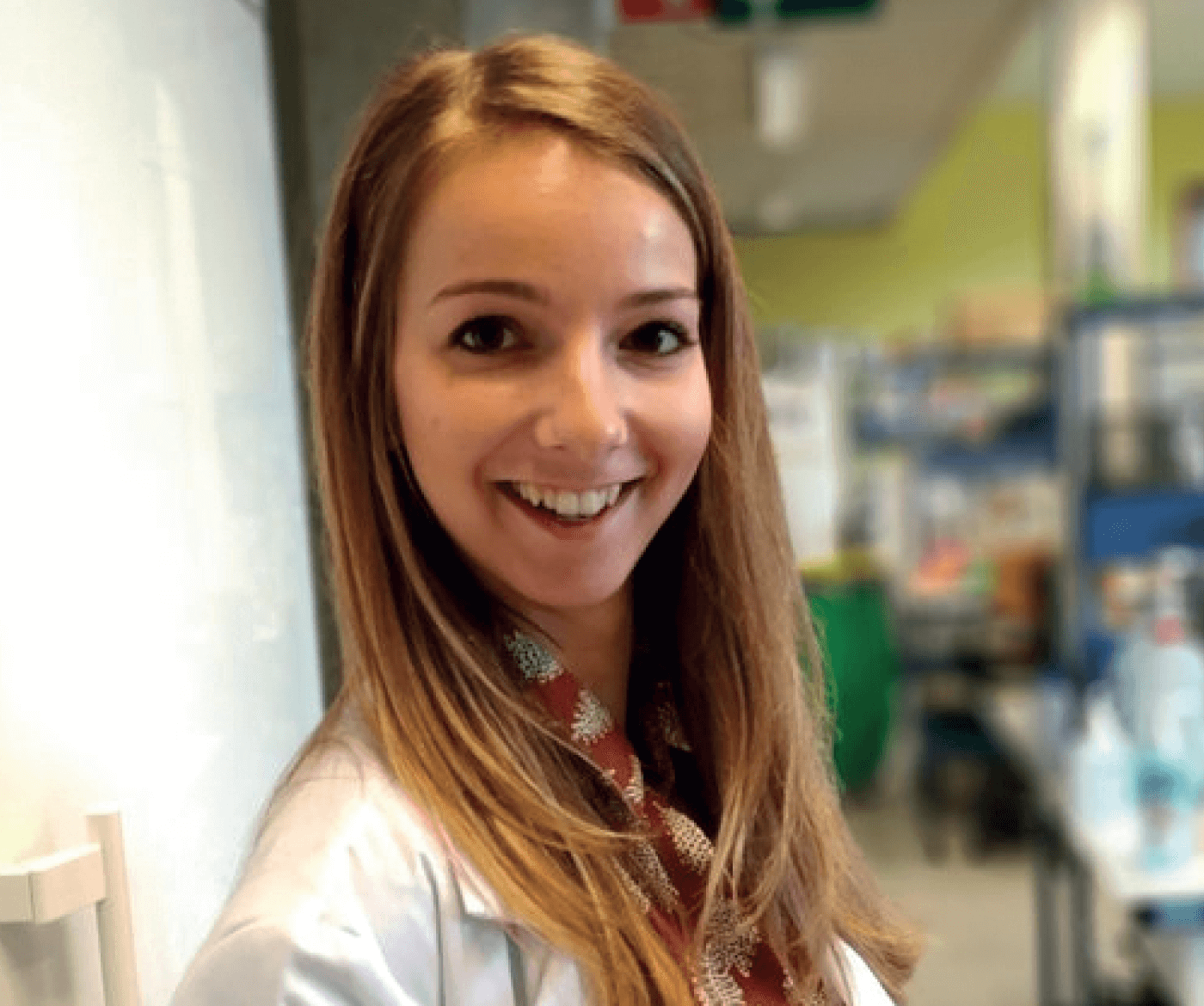The rise of omics has been a hot topic in our group for the past few years – in part because our own expertise aligns somewhat with the needs of these fields. Metabolomics is then particularly challenging for the separation science community, demanding the application of high-end iterations of various techniques, including LC, GC, MS, and NMR. In fact, when it comes to metabolomics, most analytical tools have a “seat at the technique table” – after all, multimodality is the only way to make sense of such high sample complexity.
Multidimensional chromatography holds one of those seats, and often comes up in conversations on how separation power should be best enhanced. Such discussions essentially center on a single question: would it ultimately be better to have analytical separation based exclusively on an ultra-high-resolution mass spectrometer or through a combination of high-resolution techniques with orthogonal dimensions (chromatographic and mass spectrometric)?
There is likely no definitive answer to this question, but we hope our works demonstrate the use of comprehensive two-dimensional GC (GC×GC) coupled with high-resolution MS (HRMS) as one compelling option. By combining these techniques – and thus exploiting several levels of orthogonality – we have been able to improve both the versatility and the robustness of the unknown compound identification process – particularly in the young field of breathomics, which we’ll talk more about later.
On the chromatographic side, linear retention indices (LRIs) provide a first identification metric for unknown compound that can be compared with true-standard values and commercial libraries (for example, NIST, Wiley). It is also useful to estimate the carbon number of unknown compounds; in the context of GC×GC, the structured elution pattern provides information regarding the carbon number – and it also indicates the polarity and even the chemical class of the eluting unknowns.
Next comes the ionization method – the physico-chemical transformation link between chromatographic separation and MS analyses. In the context of GC, electron ionization (EI) offers a key advantage over LC-based approaches, which suffer from time-consuming peak annotation (1) (2). In fact, EI provides a highly reproducible fragmentation pattern regardless of the analytical conditions or instrument (3), which allows us to compare fragmentograms with reference libraries to provide MS-based identification. At the end of the process, MS analyzers add the final touch of the identification step with an efficiency that is directly proportional to their mass resolution and accuracy – two metrics that are constantly increasing for all types of MS analyzers (and independent from the chromatographic separation side).
GC×GC-HRTOFMS has become increasingly available for routine analysis over the last decade. This trend began when it was used to completely characterize single samples (4), but as data processing methodology for low-resolution data evolved and was applied to HR data, GC×GC-HRTOFMS soon became useful for studying larger samples (5). Nevertheless, untargeted metabolomics is a complex playground; sample preparation and optimization, QC elaboration, data processing, and so on, all still represent real challenges. Building on this early work, GC×GC-HRTOFMS has now been extensively challenged by metabolomics with various levels of success (6). In our group, we have been investigating different applications.

To develop and validate a reliable analytical method, we have focused on the analysis of derivatized serum samples. This matrix has been investigated thoroughly using standard GC; this work, conducted by pioneers like the Fiehn Lab, provides a strong basis on which future research can be built.
Our first step was the optimization and validation of analytical conditions using a NIST standard reference material for human plasma (1950) (7) (8). We demonstrated the applicability of our method through a proof-of-concept study that identified 33 serum metabolites specific to Crohn’s disease. Orthogonal identification capacities allowed us to annotate half of these with Metabolomics Standards Initiative level two confidence. Now we’re taking advantage of a sensitive, high-speed MS analyzer to conduct this research with minimal sample volume and preparation, providing an exciting focus for the coming years.
Our larger aim is to develop a multiomics screening platform for this universal matrix. Though small molecules can be characterized by GC(×GC), complementary information that completes our knowledge of these samples will come from LC(×LC)-MS and MS-only screening. Thus, combined approaches are needed to lift the veil of relevant metabolic pathways.

Another area for GC×GC-HRTOFMS application is volatilomics, which describes the metabolomics-type screening of volatile organic compounds in complex matrices. The best way to characterize small volatile molecules in normal conditions is to transfer them directly into the analytical instrument, avoiding extensive sample preparation. In this field, however, the constant development of trapping devices (solid-phase microextraction fibers, thermal desorption tubes, and so on) allows for the robust sampling of volatile molecules. Yet, the validation of routine analytical strategies for volatilomics remains challenging. This is mostly because of a lack of reference materials and difficulties performing interlaboratory testing.
Our lab has worked on various untargeted volatilomics applications – from food to plants – but the medical field has been our main target over the last five years or so. During that time, we have worked on the development of a complete analytical workflow for exhaled breath characterization (9) (10).
Breath research is a growing and challenging field for analytical scientists. From reliable sampling to robust processing, all involved steps need to be carefully controlled. The strategies employed must also be adapted to context-dependent needs. GC×GC-HRTOFMS has been our “go to” instrument for this type of research. For on-site support and diagnosis, direct MS methods (for example, selected-ion flow-tube MS and proton transfer reaction-MS) seem to be the fastest and most-adapted tools.
Based on a number of studies on lung cancer detection and inflammation phenotyping, we’ve conducted the first large-scale study on breath, combining targeted and untargeted screening (11). In vitro models then allowed us to determine the cellular origins of these volatile molecules (12). Combining information from volatile molecules identified by such methods and larger molecules in the liquid phase is necessary to complete multiomics visualizations – underscoring the power of complementarity between techniques.
With the increasing use of GC×GC-HRTOFMS in untargeted metabolomics, the future looks exciting (6) (13). Still, multiple challenges should be tackled to make GC×GC-HRTOFMS a truly recognized contributor to large-scale untargeted screening. The biggest challenges remain at the level of the study design and data processing workflow – it is paramount that the robustness and accuracy of every individual measurement is consistent throughout the entire batch. This will only be achieved with a better definition of QC procedures (especially for volatile samples), a better understanding of chemometric tools, and the development of integrated software solutions to manage the different steps from injection to processing output. But none of these challenges are unique to the technique; therefore, strong collaboration between different fields of analysis will be required to successfully overcome them.

References
- DJ Creek et al., “Metabolite identification: are you sure? And how do your peers gauge your confidence?”, Metabolomics, 10, 350 (2014). DOI: 10.1007/s11306-014-0656-8
- M Sindelar, GJ Patti, “Chemical Discovery in the Era of Metabolomics”, J Am Chem Soc, 142, 9097 (2020). DOI: 10.1021/jacs.9b13198
- NH Snow, “Basic Multidimensional Gas Chromatography”, 12. Elsevier: 2020.
- JV Seeley, SK Seeley, “Multidimensional gas chromatography: Fundamental advances and new applications”, Anal Chem, 85, 557 (2013).
- KA Perrault et al., “A minimally-invasive method for profiling volatile organic compounds within postmortem internal gas reservoirs”, Int J Legal Med, 5, 131 (2017).
- EA Higgins Kepler et al., “Advances in the application of comprehensive two-dimensional gas chromatography in metabolomics”, Trends Anal Chem,109, 275 (2018). DOI: 10.1016/j.trac.2018.10.015
- N Di Giovanni et al., “Untargeted Serum Metabolic Profiling by Comprehensive Two-Dimensional Gas Chromatography–High-Resolution Time-of-Flight Mass Spectrometry”, J Proteome Res,19, 1013 (2019). DOI: 10.1021/acs.jproteome.9b00535
- N Di Giovanni et al., “Specificity of metabolic colorectal cancer biomarkers in serum through effect size”, Metabolomics, 16 (2020). DOI: 10.1007/s11306-020-01707-w
- J Beauchamp, CE Davis, J Pleil, “Breathborne Biomarkers and the Human Volatilome”, 2. Elsevier: 2020.
- FN Schleich et al., “Exhaled volatile organic compounds are able to discriminate between neutrophilic and eosinophilic asthma”, Am J Respir Crit Care Med, 200, 444 (2019).
- R Pesesse et al., “Multimodal chemometric approach for the analysis of human exhaled breath in lung cancer patients by TD-GC×GC-TOFMS”, J Chromatogr B, 1114, 146 (2019).
- D Zanella et al., “Comparison of the effect of chemically and biologically induced inflammation on the volatile metabolite production of lung epithelial cells by GC×GC-TOFMS”, Analyst, 145, 5148 (2020).
- BA Weggler at el., “Comprehensive two-dimensional gas-chromatography to study the human exposome: Current trends and perspectives”, Curr Opin Environ Sci Heal, 15, 16 (2020). DOI: 10.1016/j.coesh.2020.02.011




